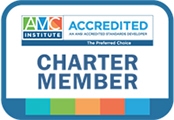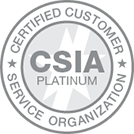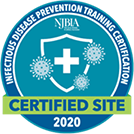We made an interesting discovery recently when looking at the website analytics for one of our client partners. The good news: we found high visitor traffic to two specific sections of content on the site and the site experienced a very low bounce rate of 21 percent. Bounce rate is the percentage of people leaving your site from the same page they entered — usually an indication of whether or not they found what they were looking for or expected. On the surface, this appeared to be very good news. When looking a bit more closely, however, three metrics led us to a slightly different conclusion.
- The high-trafficked sections were continuing education and credentialing
- Traffic to all other content on the site was considerably lower
- Users did not spend a lot of time on the site.
The conclusion? The site is serving primarily one purpose. Visitors and members are coming to the site with a specific task in mind and are motivated to complete that task and then leave. While the site seems to serve this purpose well, it also suggests a limited perceived value outside of this function. Visitors’ main objective is to get their CEUs so that they can remain credentialed. Apparently, they’re not finding other content on the site to be that useful.
The above example illustrates a challenge that organizations of all types face relative to the development of their web content strategies. Understandably, everyone experiences budget constraints and challenges, but, from my experience, the ability to create content is not typically one of them. Closely related and much more challenging, however, is to identify, create, and maintain timely and relevant content. That’s where the importance of getting your content strategy right comes in.

Having a content strategy is not a new idea. All too often, though, we see a content strategy based on personal expertise or preferences of a single individual. Ensure that you start with a solid foundation by considering the following as you develop and/or review your web content strategy:
- Website objectives and goals — You must start here. Establish and gain consensus on what you’re trying to achieve with the site. What are the desired and expected outcomes from those visiting? Relative to content, one of these objectives should relate to establishing yourself as a credible source, whether as a creator, publisher, or aggregator of valued content.
- Web analytics — This is one of the best sources for starting your content strategy development or review. Delve into not only top-level metrics (page visits, etc.), but also into traffic patterns and pathways through the site. Remember though, this will not provide you with all of the answers you will need, so don’t stop here.
- Direct customer feedback — Nothing replaces the need to hear directly from your target audience and current customers. Gain an understanding of their needs and desires by conducting surveys, providing feedback forms, and gathering insights from those who interface with them on the phone, via email, and your social media venues.
- Competitive review — Analyze your competitors’ websites from a content perspective. Include a competitive SEO analysis to help determine how your content is performing relative to the competition and what your audience might be looking for that you’re not offering.
- Governance plan — Don’t forget to plan for how content will be created, approved, published, updated, and removed. These processes and policies need to be established in the beginning and then enforced consistently. Establish some form of central editorial control. A key challenge in this area is to establish ownership and accountability for content. A typical modus operandi for web content has been to throw it up and forget about it. On a related note, there’s been a tendency to never remove old content. Some content may be ok to put into an archive, but there’s much that should be removed entirely. Stale, irrelevant, or just poorly written content can significantly impact your reputation and credibility. Two approaches for determining the point at which to remove content are to set thresholds a) by age of the content (such as last updated date) and, b) by visitor traffic. Find ways to automate the notification and purging of this old/useless content.
Finally, a couple of other considerations to keep in mind. First, don’t let tactics drive your strategy. Resist the urge to let the latest “shiny gadget” distract you from your objectives. Tactics and annual plans may change, but your strategy shouldn’t be changing every year.

Second, and to that point, while your strategy won’t change that often, be sure to continue monitoring your data, customer feedback, etc., on an ongoing basis so that you can identify if and when your strategy does need to change. Remember, this is an ongoing effort that necessitates keeping a pulse on the changing landscape of content relevancy for your audience.
So take a look at your website metrics like bounce rate vs. unique visitors and reevaluate the strategy you have in place. If you don’t have anything in place, now would be the time to start that process.




